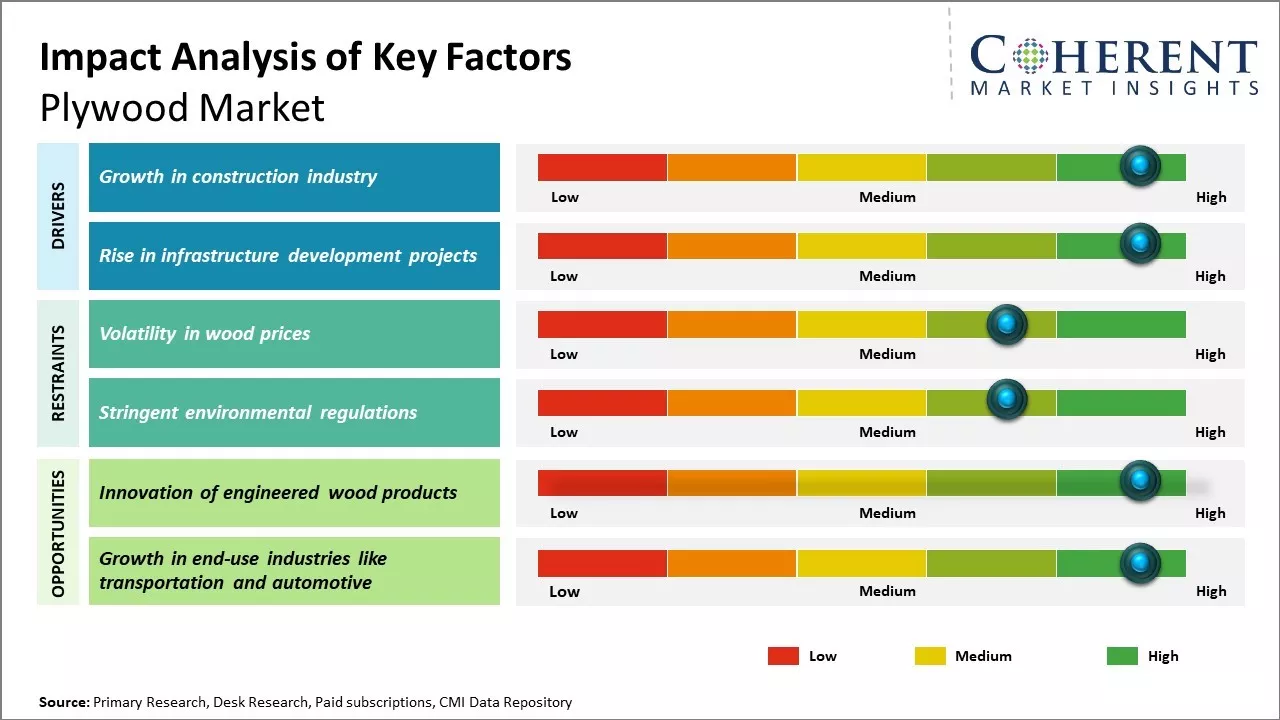The plywood market is estimated to be valued at USD 65.59 Bn in 2025 and is expected to reach USD 103.35 Bn by 2032, exhibiting a compound annual growth rate (CAGR) of 6.7% from 2025 to 2032.

To learn more about this report, Request sample copy
The market has been witnessing consistent growth over the past few years owing to rising applications in the construction, packaging, and furniture industries.
Market Driver - Growth in construction industry
The construction industry has been growing rapidly over the past few years and this growth has significantly contributed to the rising demand for plywood. As the number of new residential and commercial construction projects increases, there is a parallel rise in the consumption of wood-based materials like plywood. It is widely used in flooring, roofing, furniture making, and other applications in buildings. Whether it is a small housing project or a large commercial complex, plywood remains one of the most versatile and cost-effective wood panel products.
Driven by the rising population, rapid urbanization and increasing income levels, there is constant pressure on real estate developers to build new residential units in cities and towns. This has created a huge housing requirement across both developing and developed nations. At the same time, the commercial real estate sector is also expanding steadily with growing demand for retail space, office space, warehouses and other constructions. All these new residential and non-residential building activities have translated to higher volumes of plywood sales. Its adoption is further bolstered by the material advantages of plywood like strength, durability and stability compared to other substitutes.
The growth momentum is visible even in the public infrastructure segment like hospitals, schools, transport hubs and government buildings. Many countries are undertaking large construction of operational facilities to cater to the needs of a rising population. For example, in the education sector, both construction of new school buildings as well as renovation and expansion of existing institutions is driving plywood demand. Similarly, the healthcare infrastructure is witnessing a massive revamp across both rural and urban regions. All such public infrastructure projects incorporate significant usage of engineered wood products like plywood for floors, walls, roofs and other applications requiring strength.
Joining thousands of companies around the world committed to making the Excellent Business Solutions.
View All Our Clients